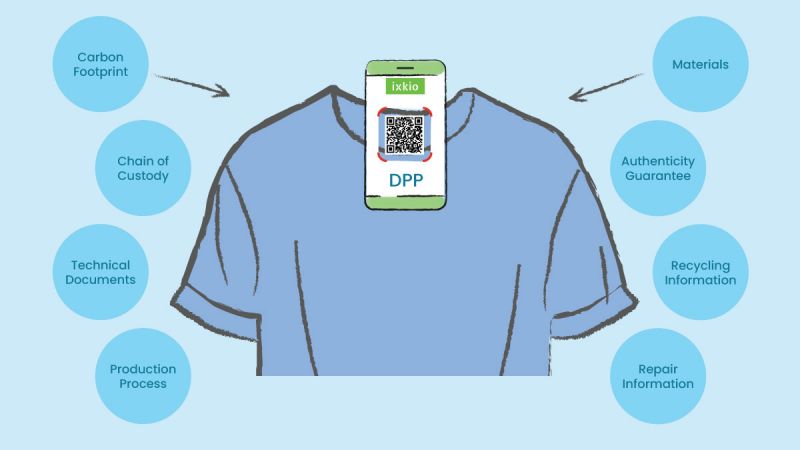- News
- What is a Digital Product Passport ?
What is a Digital Product Passport ?

What is DPP?
Digital Product Passports are simply a way of storing information related to a physical product. For example, where it was made, the materials it was made from and guidance for disposal. The idea is being implemented to reduce waste, improve sustainability and increase circular economy for a product in a growing number of industries.
How will DPP be used?
The ultimate goal is that all products will have an NFC tag or QR code linking to blockchain data which will provide product related data that can be accessible for the owner.
To be clear, as of writing this article, it’s not yet been verified which blockchain will be the main choice.
It’s also not yet been verified which data is specifically required and which will be volunteered. It’s not even been decided which format the data structure should be in. In our opinion at this stage, it shouldn’t prevent companies from starting to move forward. Data can be stored traditionally at this stage and then move to a blockchain when these details have been decided.
Who is implementing DPP and when?
The driving force behind much of this is the European Union which has implemented a role out timeline for example all clothing would carry a DPP by 2030. Other products such electronics, furniture and construction materials will follow shortly afterwards.
However, many other industry and government bodies, manufacturers and distributers are also getting involved and see this as a way of promoting ownership intelligence. The benefits of DPP are far reaching and include sustainability goals, authentication, regulatory compliance, environmental impact, product provenance and more. Therefore, there are a broad range of industries that are backing DPP.
What data is being stored and why?
The potential scope of this is substantial and could include environmental impact of the individual product, carbon footprint, materials, material composition, manufacturing/production process, water, recycling/reusing information, history, technical documents, chain of custody, return/repair information, social standards compliance, authenticity guarantee etc…
Clearly this would be an immense challenge to most manufacturers. So where do you start? At this stage companies using our ixkio platform that have started to implement DPP have started where they can. You start learning how to use NFC tags or QR codes, how to get the right tag in the right product, how to associate digital data with that tag, how to present that data to the customer and start collecting your data.
Where is the data is being stored?
The general concept as presented by Cirpass, an EU funded initiative tasked with setting the standards for DPP, is that product data would be stored on the ‘blockchain’. The concept that the data would be publicly accessible and resistant to tampering. Unfortunately at this stage it’s difficult to know which blockchain(s), data structure or access mechanism this might take.
For example, if you had an electrical appliance such as a boiler that had been repaired the details of the company carrying out the repair could be logged and permanently stored on the digital product passport. In this instance, a future homeowner could access the repair history and have the reassurance that the appliance had been properly looked after.
There is some debate about whether private user data could or should be stored as part of the ownership history of a product. We think it’s unlikely that users will want to have a permanent store of their user data stored on a public blockchain. However, we don’t think that the storage of personal ownership is a critical part of the DPP concept.
Ixkio
In our opinion it’s difficult at this stage to understand the future scope of DPP however, the momentum behind DPP and the clear benefits mean that this is going to happen.
For many companies this might deem daunting, however we’ve started working on DPP projects with a wide range of companies and starting simple is not as big a step as it seems. As previously mentioned, ixkio can help you start putting your data together and importantly provide the right tools and features to help you get the right tag in the right product.
If you’re interested in starting to implement your DPP project, ixkio can help.

A quick intro to NFC tags - what they are, how they are used and the different types of tags

Pricing for our encoding, scanning, ID printing and batching services.

Details of our NFC tag encoding services.

How to order ID / QR code printing on your NFC tags.

How you can order a UID scan of your NFC tags.






